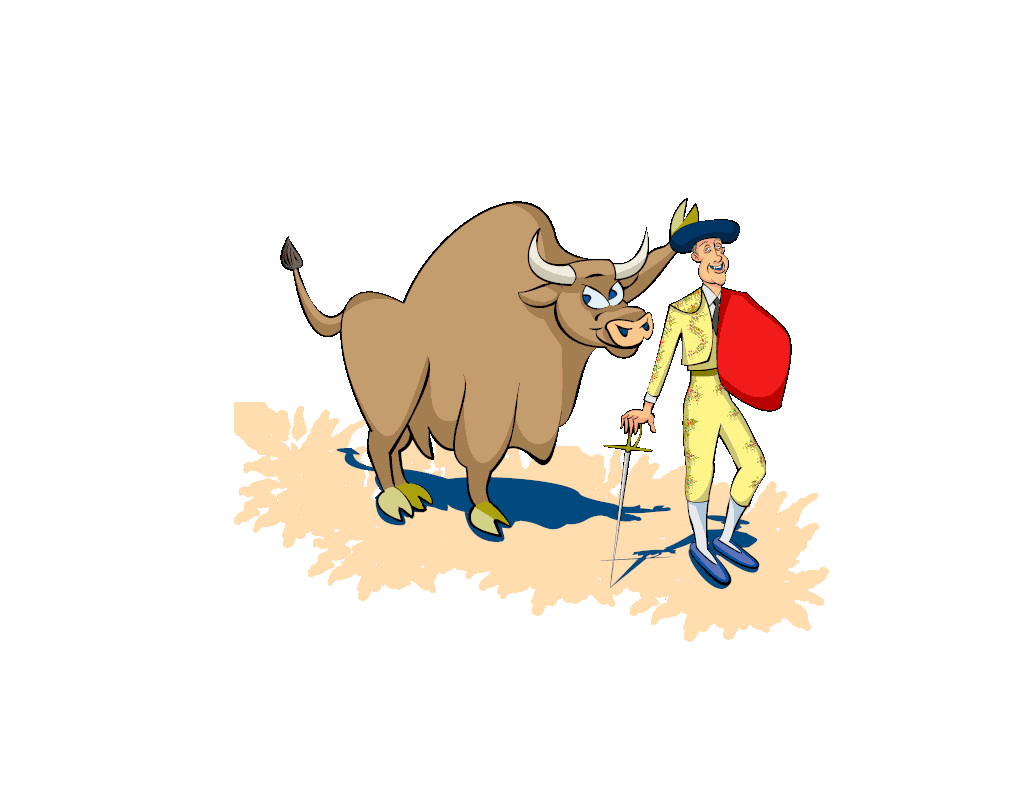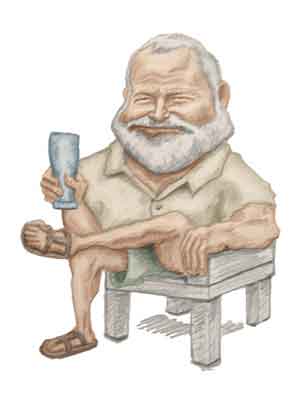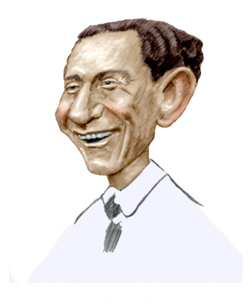Manuel Granero
(Y Su Amigo)

(Click on the image to zoom in.)
"You see this beautiful creature, whom you admire because he is so gorgeously equipped with power for wild life, trapped in a ring where his power is nothing. You see him baffled, bewildered, jabbed, stabbed, haunted, hounded, steadily brought dreadfully down from his beauty of power. That is what a bullfight is, and that is all it is."
- Max Eastman, "Bull in the Afternoon" (Abridged), New Republic, 1933.
Bullfighting is indeed a controversial sport and has recently been banned in Mexico City. But bullfighting of some form is nevertheless permitted in many countries, although the type of spectacle - perhaps a more accurate term than "sport" - where there is an actual matador (from the Spanish matar, "to kill"1) - is limited to Spain, parts of Mexico and South America, and - a surprise to many - China.
Footnote
The -dor ending of Spanish nouns indicate they are an agent of doing of a verb. The suffix more or less corresponds to the -er ending in English. So you have cantador (singer) from cantar (to sing), bailador (dancer) from bailar (to dance) and, as here, matador (killer) from matar. Virtually all Spanish verbs - here are some -ar verbs - result in the many nouns like terminador, avisador, invitador, intentador, despertador, gastador, bañador, enviador, ayudador, afeitador, cambiador, borrador, descansador, acabador, mandador, trabajador, contestador, preocupador, peinador, cansador, bajador, ordenador, cantador, caminador, olvidador, esperador, cepillador, necesitador, continuador, manejador, mirador, estudiador, cuidador, ganador, lavador, cenador, pasador, tirador, viajador, preguntador, hablador, molestador, desayunador, bailador, rentador, comprador, limpiador, calentador, perdonador, llamador, cortador, enseñador, entrador, amador, duchador, escuchador, levantador, agarrador, aceptador, tomador, and visitador.
Nevertheless, in parts of the world where the corridas de toros - the runnings of the bulls - is part of the long established culture, the matador is a figure of celebrity rivaling that of movie, rock, and athletic stars. But one fact that distinguishes the, well, we'll call it a "sport", from many others is its longevity. Unlike many of the mega-arena sports - American football, baseball, cricket, rock concerts - bullfighting in a more or less modern form has been around since the 1700's.
However, the roots of bullfighting go back millennia. Fresco paintings from the Minoan civilization on the island of Crete show what can best be described as acrobatic contests involving bulls. The bull would charge at the acrobat who would grab the horns, then flip heels-over-head to land on the back of the bull. There were various techniques and each contestant would compete to be the best bull-leaper in all of Crete. Today there are bull-leapers in other countries who keep the tradition alive although the specific methodology is a bit different than in the older days.
Minoan Leapers
However, the direct predecessor of the modern bullfight with a matador was probably the ludi bestiariorum, the "games" of Ancient Rome where the bestiarius2 - the animal fighter - fought an animal to the death. The death being either that of the human or the animal whichever came first. Of course, the animal could be bulls but could also be lions, tigers, and bears (oh, my!), as well as leopards, ostriches, and even elephants.
Footnote
Strictly speaking and despite common usage, the bestarius was not a gladiator. A gladiator was a swordsman (Latin gladius, -i: sword) who fought other men. A bestarius would be expected to fight until the animal or he was dead. Not so for a true gladiatorial contest where 80 - 90% of the bouts ended with both contestants surviving.
Here we also see that the Latin ending -tor is the direct precursor for the Spanish -dor.
Today if you look at lists of the "Greatest Bullfighters in History", you'll see the likes of Alejandro Amaya, Carlos Arruza, Cesar Rincon, Enrique Ponce, Francisco Rivera Pérez (Paquirri), Francisco Romero López, Curro Romero, José Tomás, Juan José Padilla, Julián López Escobar, Manuel Benítez (El Cordobés), Manuel Rodríguez (Manolete), Miguel Báez, Morante de la Puebla (José Antonio Morante Camacho), Cayetano Ordóñez, Pepe Luis Vázquez, Rafael Gómez Ortega, Antonio Ordóñez, Rafael Molina (Lagartijo), and Sebastian Castella, and of course, the greats like Luis Miguel González Lucas (Dominguín), José Gómez Ortega (Joselito), and the legendary Juan Belmonte.
Such a list would have been a surprise to those who first saw Manuel Granero when he debuted in the Seville bullring on September 18, 1920, at age 18. It would have been a travesty to omit the matador who was the designated successor of the famous Joselito who had been killed earlier that year while fighting a bull in Talavera de la Reina about 65 miles southeast of Madrid.
However, Manuel's tenure was brief. On May 7, 1922, he was killed in the ring in Madrid. He was only 20 years old, four years younger than Josélito at the time of his death, and they were two of the more than over 500 matadors to be killed since 1700. The most recent fatality in the bullring was in 2017 when the matador stumbled over his muleta, the cape used by the matador to maneuver the bull.
Bullfighting aficionados will point out that the bulls that are killed in the rings are often donated to charity for the meat. Since the bull has opportunity to "handle" the matador and there are times the bull is pardoned, the fans point out that any non-vegetarian should have no reason to complain about a bullfight.
However, the bullfighting opponents, los adversarios de las corridas de toros, point out that the bull is subjected to a long drawn-out and painful process. First a picador, a mounted horseman armed with a long lance, enters the ring and provokes the bull to charge. He then stabs the bull in the back of the neck muscle. The goal of the picador is to weaken the neck of the bull so it will keep its head lower than normal. In this way the matador will have an easier time when it comes to the estocada, the killing of the bull at the end of the fight.
This attack by the bull against the horse is also intended to further fatigue the bull's neck which again keeps the head low during the charges. But the horse of the picador does not fare well. In the early days - pre-mid-20th century - the horse had no protection and was commonly and fatally gored by the bull. A famous drawing by Picasso graphically illustrates the effect of the bull on the caballo de picador.
Today the horse is protected by encircled padding but even then there is the possibility of fatal internal trauma. The horses can also be knocked down which can also result in potentially life threatening injuries. A bullfight, say los adversarios, is not just about the bull and the matador.
Once the picador has completed the first part of the bullfight, the tercio de varas, the second part begins. This is the tercio de banderillas where one of the assistants to the matador, the banderillero implants two decorated barbed sticks, the banderillas, into the neck of the bull. The banderillas have barbed ends and so remain in the bull's neck throughout the rest of the fight. The banderillas further weaken the bull's neck muscles. Then comes the tercio de muerte where the matador fights and dispatches the bull.
A matador is accompanied into the ring by an entourage called his cuadrilla which is made up of two picadors and two or three banderilleros. It is proper to refer to picadors, banderilleros, and matadors as toreros - that is, bullfighters - although toreador is commonly used. But if you review the Spanish grammar, this word could come less from the word toro than the verb torear which means "to tease". In that sense a toreador is someone who teases the bull.
Usually there are three matadors appearing in a bullfight, each with their cuadrilla. They fight two bulls apiece. Their performances are judged by el Presidente de la Corrida, who is usually a well-respected civic leader and long time aficionado. He sits with two advisors, one who is a veterinarian and the other is a retired bullfighter who provides technical expertise (including artistic) of the performances.
The President consults the crowds in his judgement just as did the Ancient Roman editor of the gladiatorial combats. The matador can be awarded one ear, both ears, and the tail. The ultimate award is both ears, the tail, and a hoof. Such an award is rare but was once granted to Antonio Ordóñez in a bullfight in 1959 in Ciudad Real about 100 miles south of Madrid.
Antonio's award winning performance was during what is called a mano-a-mano (hand-to-hand). Instead of three matadors fighting two bulls each, there are two matadors contending with three bulls apiece.
In a mano-a-mano bullfight there is another member of the cuadrilla, the sobresoliente. The sobresoliente is a matador whose job is to kill the bull if something goes wrong and the chief matador can't or shouldn't.
In the mano-a-mano where Antonio got the triple award, his sobresoliente was El Pecas (The Freckled One), an American. Yes, some Americans have become Spanish style bullfighters and who performed in Mexico and Spain. For some reason the American television show, What's My Line featured a number of los matadores norteamericanos.
But Antonio's sobresoliente, we must admit, was not a Spanish style bullfighter. In fact, he wasn't a bullfighter at all. "El Pecas" was Aaron Edward Hotchner who was a writer and a friend of Ernest Hemingway. Ernest was covering the fights so he could write an article for Life Magazine and had invited Hotch to join him for the tour.

Ernest

Hotch
El Pecas
Hotch's serving as Antonio's sobresaliente was, of course, just a prank. For the match he was dressed up in one of Antonio's spare uniforms and was present in the ring while Antonio performed. It wasn't expected that the sobresaliente would be needed and the main danger to Hotch was if the officials found out about the gag. In that case, Hotch could end up in a Spanish jail anywhere from a week to a month.3
Footnote
There was one member of Antonio's cuadrilla who did spend some time in jail later in the year. And that was Antonio himself!
In American ice hockey if a player deliberately and with premeditation attacks another player with his stick, he gets time in the penalty box. If a football player deliberately throws a punch at an opponent, he might get a 15 yard penalty. If a baseball pitcher deliberately throws a ball at a batter, he might get tossed from the game.
And Antonio's infraction that landed him 30 days in jail?
He was using picadors who had been suspended.
It seems the Spanish take the integrity of their sports more seriously than do others.
The other (real) matador in the mano-a-mano was Luis Miguel Dominguín (pronounced doh-meen-GEEN). Luis Miguel himself had earlier been a participant in one of the most famous mano-a-manos in history on August 29, 1947, in Linares. Luis Miguel was only 21 years old, but had been making such a good impression on the aficanodos that he was matched with the top matador of the time. That was Manuel Laureano Rodríguez Sánchez, better known as Manolete.
When a matador is killed in the ring it is often during one of the cape passes - a veronica, chicuelinas, gaoneras and the like - and the bull makes an unexpected turn to inflict the horn wound or cornada. But Manolete was actually in the act of killing the bull when a horn caught him in the leg. The irony in Manolete's death, probably the most famous fatality in a bullfight, is it isn't really clear if it was the cornada itself that was actually fatal or if it was because Manolete was given a transfusion with the wrong blood type.
Although bullfighting is a male-heavy sport, there have been a number of successful women matadoras. In fact, there's been some American women bullfighters such as Patricia McCormick (1929 - 2013) and Bette Ford (b. 1927). However, until the mid-1990's none of the women bullfighters were promoted to full madators but remained as a novice or novallera. A novallero or novallera can only fight bulls less than four years old.
Bullfighting came to the attention of 20th century Americans with the publication of Ernest Hemingway's The Sun Also Rises where much of the action is at the Fiesta de San Fermín at Pamplona. Ernest later followed this novel with a non-fiction book, Death in the Afternoon. To the absolute beginner, the aficionado novato, Death in the Afternoon is a good enough introduction to bullfighting although it is considerably dated as there is nearly a century gap between the book's publication and the present day.
However, not everyone agrees on the quality of the book's information. Luis Miguel Dominguín left us some comments, both on the book and about its author who was nominally his friend:
Hemingway had no knowledge of bullfighting. He knew more than most Americans but less than almost all Spaniards. I never read Death in the Afternoon though I've been told about it, because there is nothing I could learn from it.
Luis Miguel also left us some supplementary information about Ernest:
It was difficult to converse with him, especially at his finca [country home] in Havana, because his Spanish was extremely poor, even childlike. Because he worked in the mornings and because he began to drink heavily as soon as he stopped writing, there was only a brief period during the first few drinks when good talk was possible.
Although it's now largely forgotten, Max Eastman's review of Death in the Afternoon, led to what might be called a "bull" fight. Soon after the review appeared, Max was in the office of Scribner's editor, Max Perkins, when Ernest came in. After he sat down, Ernest began objecting to Eastman's assessment that Ernest's books, particularly Death in the Afternoon, were an example of the "false hair on the chest" syndrome. Ernest suddenly bared his chest showing an impressive pectoral thatch. He then reached over and opened Eastman's shirt showing a bare field. Perkins thought about opening his own shirt but suddenly Ernest started yelling at Eastman and the altercation got a bit physical. Max got his version into print where he claimed to have bested Ernest in a fight. Ernest later pooh-poohed the account saying he was just trying to hold off the more elderly writer.
When Ernest got the proofs for Death in the Afternoon, he was in Key West, Florida, suffering from a respiratory infection that had developed into bronchial pneumonia. As was typical each page had a header which abbreviated the title. In this case each time Ernest picked up a sheet, it was headed with the words "Hemingway's Death". Ernest sent a rather testy telegram to Max as his reading the repeated allusion wasn't the most cheerful way to start off the day.
References and Further Reading
"Will Bullfighting Survive The Next Decade In Spain?", Ana Garcia Valdivia, Forbes Magazine, December 30, 2019.
"Mexico City Ban on Bullfighting Extended Indefinitely", Associated Press, CTV News, June 10, 2022.
"A Bull Pardoned After a Bullfight at the Feria d'Arles, Teller News, April 20, 2022.
Ernest Hemingway: A Life Story, Carlos Baker, Charles Shribner's Son, 1968.
Papa Hemingway, A. E. Hotchner, Random House, 1966.
"The Day I Tried Bullfighting With My Friend Ernest Hemingway", A. E. Hotchner, Huffington Post, August 30, 2019.
"The Legacy of Dr. Louis Allard Began in Laurel", Rosalyn Visser, Outlook, May 19, 2022.
Death in the Afternoon, Ernest Hemingway, Charles Scribner's Sons, 1932.
The Dangerous Summer, Ernest Hemingway, Charles Scribner's Sons, 1985.
The Dangerous Summer, Part I, Ernest Hemingway, Life Magazine, September 5, 1959, pp. 78-88, 91-92, 94, 96-100, 102, 104, 106, 109.
The Dangerous Summer, Part II, The Pride of the Devil, Ernest Hemingway, Life Magazine, September 5, 1959, pp. 61-66, 68, 73, 75-76, 78-80, 82.
The Dangerous Summer, Part III, An Appointment With Disaster, Ernest Hemingway, Life Magazine, September 5, 1959, pp. 74-76, 78, 81-82, 84, 87-88, 95-96.
"Who, What, Why: How Dangerous is Bullfighting?", BBC, May 22, 2014.
"Spanish Matador Gored to Death", Kevin Skiver, CBS Sports, June 19, 2017.
"Who Are the Bullfight Participants?", Sandra Vallaure, Spain Traveller
"Bulls and Bull-leaping in the Minoan World", Jeremy McInerney, Expedition Magazine, Volume 53, Issue 3, 2011.